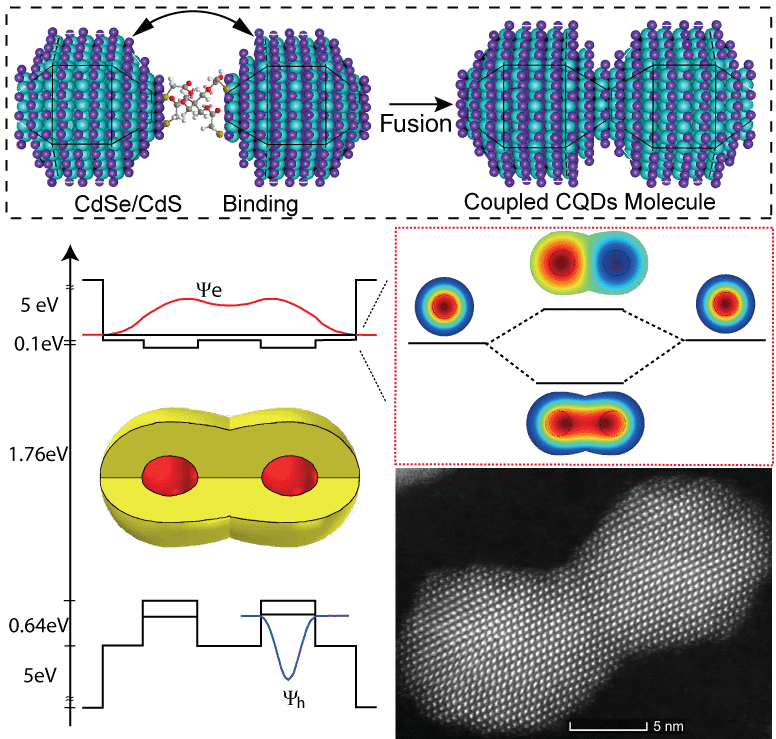
Coupled colloidal quantum dot molecules fabrication via constrained oriented attachment
2The Center for Nanoscience and Nanotechnology, The Hebrew University of Jerusalem, Jerusalem, Israel
Coupling of atoms is the basis of chemistry, yielding the beauty and richness of molecules. The utilization of semiconductor nanocrystals as artificial atoms1 to form nanocrystal molecules will further enrich their selection of composition, properties and functionalities. Especially interesting is the electronic coupling and wavefunction hybridization in quantum dots, which are highly desired for future generation quantum technologies. Such systems were already realized, grown mainly by MBE with little control over the composition and barrier size, typically yielding small hybridization energies.1 Here, we utilize highly developed core/shell CdSe@CdS colloidal semiconductor quantum dots (CQDs) as artificial atom building blocks for preparing coupled CQD molecules. While the chemical bond is the basis for combining atoms in molecules, the coupling of CQDs has to occur through adjoining of their crystal faces to form a continuous crystal. Here, we fused the chemically linked homodimer via “constrained oriented attachment” to couple two core/shell CQDs into an artificial molecule. The possible nanocrystal facets in which such fusion takes place are analyzed with atomic resolution revealing the distribution of possible crystal fusion scenarios. Tailoring of the barrier type, its height and the distance is afforded by controlling both the shell material and thickness, yielding an unprecedented control over the quantum-mechanical coupling strength. This sets the stage for nanocrystal chemistry for a multitude of coupled colloidal quantum dot molecules, envisioning homodimers with diverse core and shell materials, heterodimers and even more elaborate structures, constructed from controlled core/shell nanocrystal building blocks. Such novel CQD architectures hold significant potential for applications, as two colour emitters, as ratiometric sensors, and as electric field sensors along with the already well established commercial applications in displays and in bio-tagging.

Reference
[1]. Banin, U., Cao, Y., Katz, D. & Millo, O. Nature 400, 542–544 (1999).
[2]. O. Chen et al. Nat. Mater. 12, 445–451 (2013).
Powered by Eventact EMS